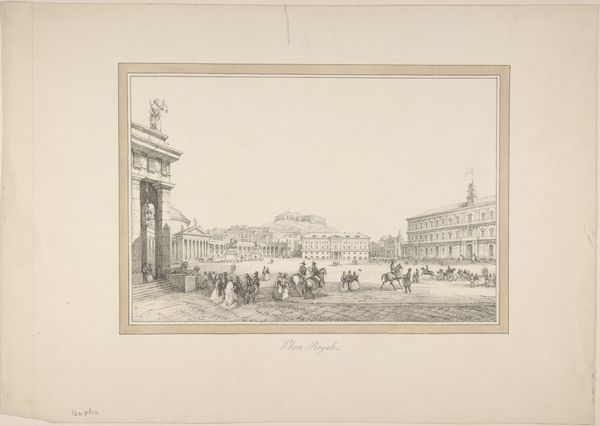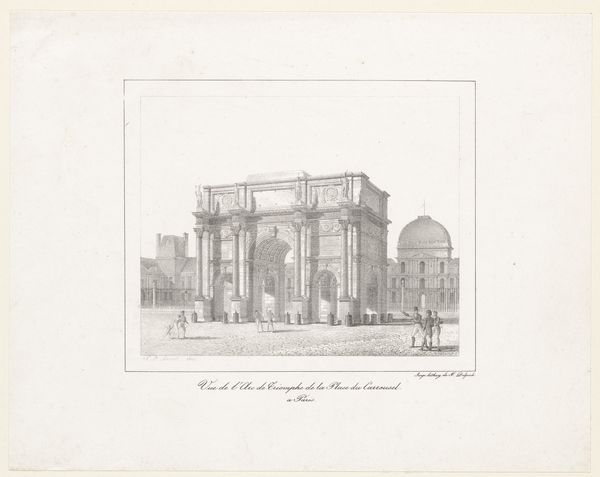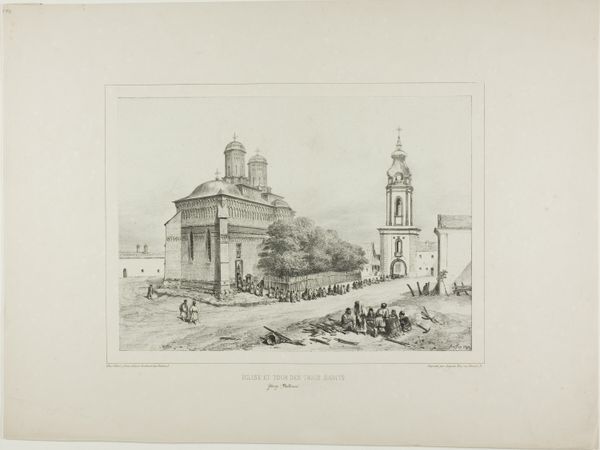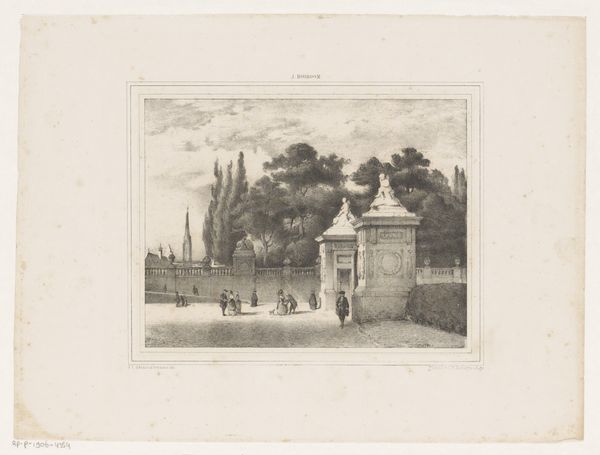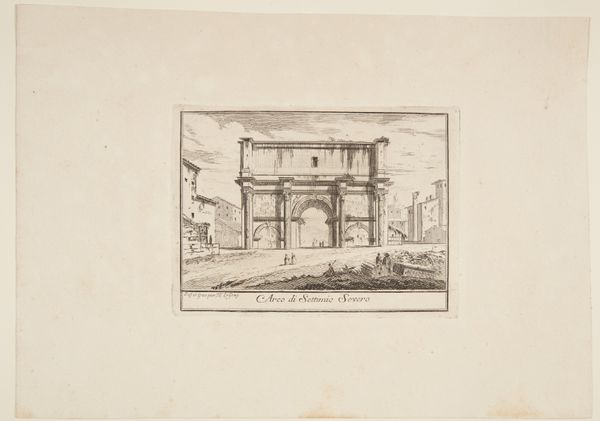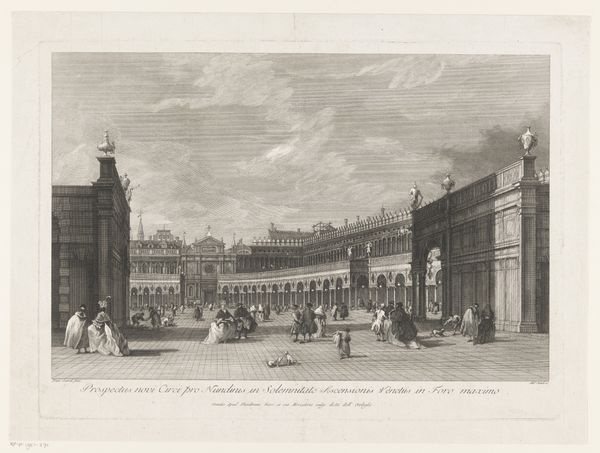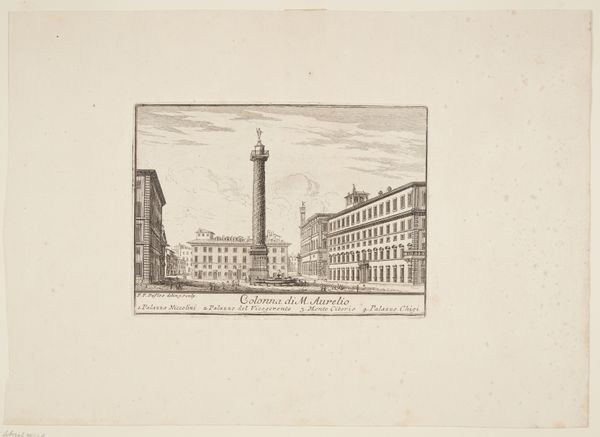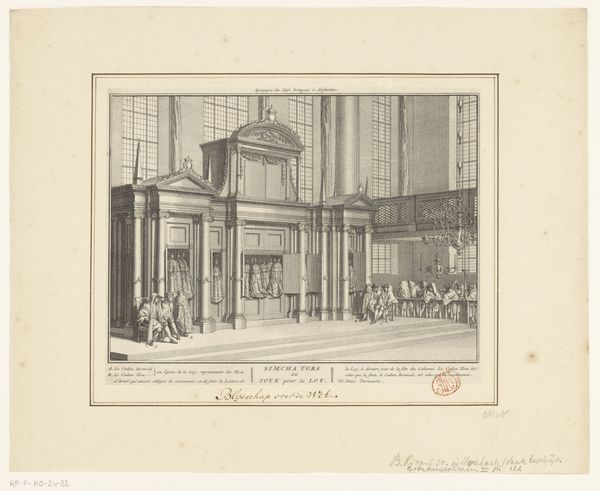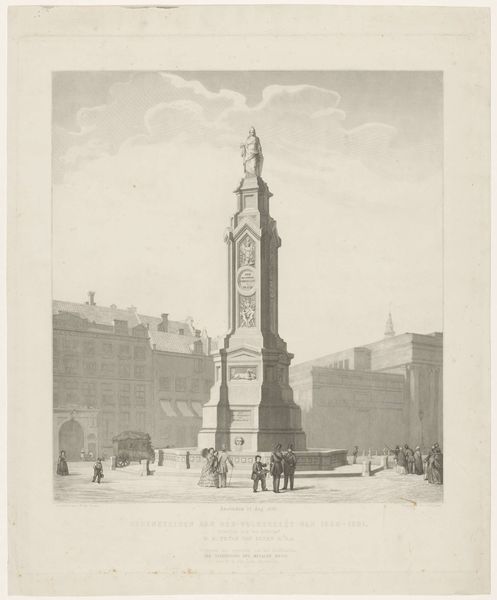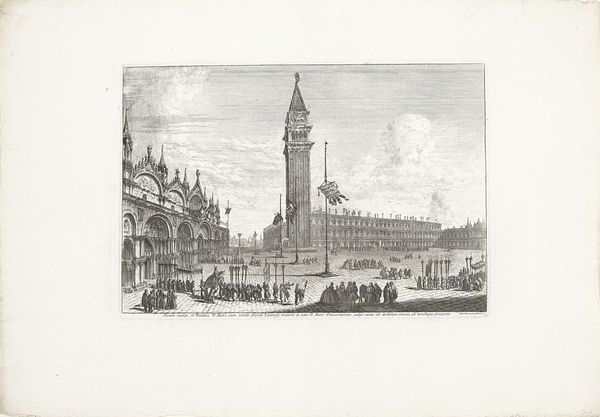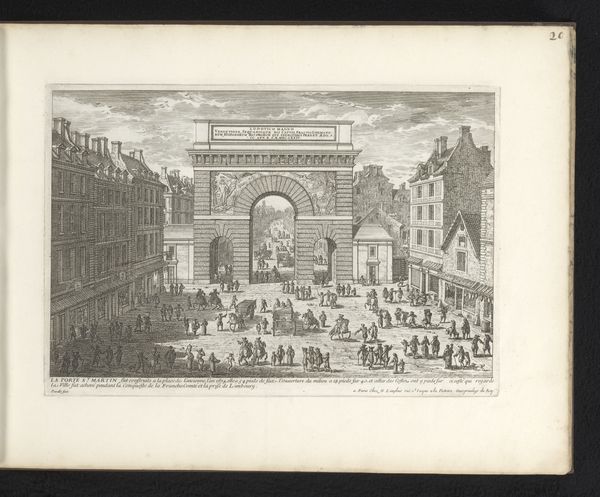
print, engraving
#
neoclacissism
# print
#
landscape
#
cityscape
#
history-painting
#
engraving
Dimensions: height 245 mm, width 318 mm
Copyright: Rijks Museum: Open Domain
Editor: Here we have Jean-Baptiste Arnout’s engraving, "View of the Fountain of the Innocents in Paris," dating from around 1820. The delicate lines capture the fountain's elegance, but there's also a feeling of social observation with the figures populating the scene. How do you interpret this work, especially considering its historical context? Curator: I'm drawn to the way Arnout positions the fountain, not merely as an aesthetic object, but as an integral part of Parisian life. The neoclassical architecture is evident, of course, reflecting the era's fascination with order and reason. But the presence of everyday people introduces a different layer, a potential commentary on social stratification and access to public spaces. Who do you think had access to such a space at that time? Editor: Probably not everyone equally. I imagine access was different based on class, even gender. The fountain appears almost like a stage, with various social interactions playing out around it. Curator: Precisely! And consider the title itself. "Fountain of the Innocents" carries religious connotations that were under intense interrogation after the Revolution. Could the artist be subtly alluding to lost innocence or a critique of power structures? The inclusion of market stalls along the colonnade suggests how public spaces often become sites of economic activity and social exchange. What does the architecture tell us about the values and expectations of the culture at the time? Editor: That it valued order and reason and hoped to recapture the greatness of classical times? I'm struck by how seemingly simple cityscapes can be so layered with meaning! Curator: Indeed. It's about unraveling the interplay between art, power, and lived experience. Arnout invites us to critically examine the narratives embedded within urban spaces and reflect on how those spaces shape our understanding of society and history.
Comments
No comments
Be the first to comment and join the conversation on the ultimate creative platform.
